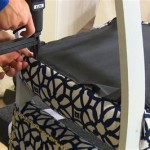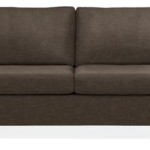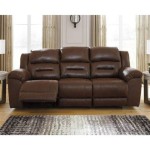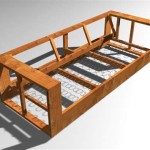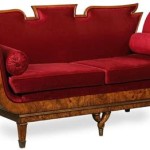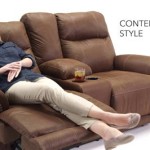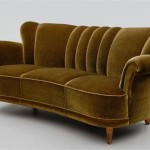Fabric Sectional Sofas: A Comprehensive Guide
Fabric sectional sofas have become a staple in modern living rooms, offering versatility, comfort, and style. Their modular design allows for customization to fit various room sizes and layouts, making them an attractive option for homeowners and renters alike. This guide explores the key aspects of fabric sectional sofas, from construction and materials to style and maintenance.
One of the primary advantages of a sectional sofa is its adaptability. Unlike traditional sofas, sectionals can be configured to fit a variety of spaces. L-shaped sectionals are popular for maximizing corner space, while U-shaped sectionals create a more enclosed and conversational seating area. Modular sectionals offer even greater flexibility, allowing individual pieces to be arranged and rearranged to suit changing needs and preferences.
The frame construction is crucial to the longevity and durability of a sectional sofa. Hardwood frames, particularly kiln-dried hardwood, are generally considered the most robust and long-lasting option. They provide a solid foundation for the cushions and upholstery, resisting warping and cracking over time. Engineered wood frames, often made from composite materials, can be a more budget-friendly alternative, but may not offer the same level of durability as hardwood.
The suspension system plays a vital role in the comfort and support of a sectional sofa. Sinuous springs, also known as S-springs, are commonly used and offer a good balance of comfort and affordability. Eight-way hand-tied springs are a more premium option, providing superior support and durability. Pocket coils, individually encased springs, offer excellent motion isolation, preventing the transfer of movement across the seating surface.
Cushion filling significantly impacts the comfort and feel of the sofa. High-density foam cushions provide firm support and maintain their shape well over time. Down-filled cushions offer a plush and luxurious feel but may require more frequent fluffing. A blend of foam and down combines the support of foam with the softness of down, creating a comfortable and resilient seating experience.
Fabric selection is a key consideration when choosing a sectional sofa, impacting both aesthetics and practicality. Natural fibers like linen and cotton offer breathability and a comfortable feel but may be more prone to wrinkling and staining. Synthetic fibers like polyester and microfiber are durable, stain-resistant, and easy to clean, making them a popular choice for families with children or pets. Performance fabrics are engineered to resist stains, fading, and wear, offering exceptional durability and ease of maintenance.
Fabric sectional sofas come in a wide range of styles to complement various interior design aesthetics. Contemporary sectionals often feature clean lines, minimalist designs, and neutral color palettes. Traditional sectionals may incorporate tufted details, rolled arms, and ornate wood accents. Mid-century modern sectionals are characterized by tapered legs, simple silhouettes, and bold color choices.
Proper maintenance is essential for preserving the appearance and longevity of a fabric sectional sofa. Regular vacuuming helps remove dust and debris, preventing them from embedding in the fabric. Spot cleaning spills and stains promptly can prevent permanent discoloration. Professional upholstery cleaning is recommended periodically to remove deep-seated dirt and refresh the fabric.
When selecting a fabric sectional sofa, consider the size and layout of the room, the desired level of comfort and support, and the overall aesthetic of the space. Measuring the available space carefully ensures the sectional fits comfortably without overwhelming the room. Testing the sofa in person allows for an assessment of the comfort and support provided by the cushions and suspension system. Considering the lifestyle and needs of the household helps determine the most suitable fabric type and maintenance requirements.
The placement of the sectional within the room is another critical factor. Consider the flow of traffic and the focal points of the room. Positioning the sectional to face a fireplace or entertainment center creates a natural gathering space. Leaving sufficient space around the sectional allows for easy movement and access to other areas of the room.
Accessorizing a fabric sectional sofa can enhance its style and functionality. Throw pillows and blankets add visual interest and provide additional comfort. A coffee table placed in front of the sectional offers a convenient surface for drinks and snacks. Area rugs can help define the seating area and add warmth to the space.
Investing in a high-quality fabric sectional sofa can provide years of comfort and enjoyment. Careful consideration of the factors outlined in this guide, from construction and materials to style and maintenance, will ensure a well-informed purchase decision and a beautiful, functional addition to any living space.

Liberty Fabric Sectional Sofa Dark Grey Ifurniture The Largest Furniture In Edmonton Carry Bedroom Living Room Couch Lounge Suite Dining Table And Chairs Patio Over 1000 S

Churanty Modular Sectional Sofa With Storage Ottoman Couch L Shape Corner Sets 7 Seats Fabric For Living Room Grey 112 87 Inch Com

Skyler Transitional Gray Fabric Sectional Sofa Couch For Affordable Home Furniture Decor Outdoors And More

Modular Sectional Sofa 7 Seats With Ottoman L Shape Fabric Corner Couch Set 3 Pillows Gray Modernluxe Target
Annadale Fabric Sectional Costco

Grey Fabric Sectional Sofa W Leather Base Optional Ottoman

Honbay Modern Linen Fabric Couch L Shape Sectional Sofa Sets For Living Room Dark Grey Com

Magic Home 85 In L Shape Corner Sofa Couch Velvet Fabric Sectional With Storage Ottoman And Cup For Dorm Apartment Grey Cs Lp000049aae The Depot

Furniture Rhyder Fabric Sectional Collection Created For Macy S

Classic Elegant Designed Fabric Sectional Sofa Set In 2024 Sofas Corner


